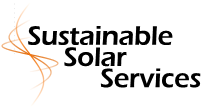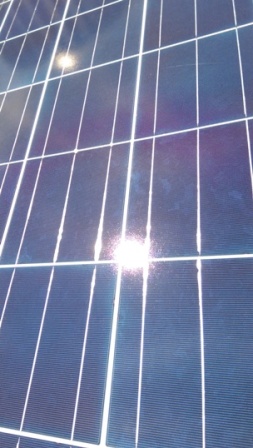Solar System Melbourne / Victoria
Frequently Asked Questions
General Solar Q&A
Which solar panels should I choose?
This is a very important question and much frustration exists in the solar industry and their customers due to bad quality panels. Our solar panel introduction page provides more background on the different technologies in the market. We always recommend to only use Tier 1 solar panels. These are ranked and rated solar panel manufacturers that are considered bankable, meaning that risk-averse banks consider them safe for the use in utility-scale solar plants.They are companies that are longer than 5 years in the market, are vertically integrated which ensures full quality control and that have an automated assembly line.
This means that these panels are very likely to last for the over 30-year lifetime of the system and that the company is also likely to be around for a while in order to serve potential warranty claims. These Tier 1 suppliers typically come with a re-insurer backing them that takes over all warranty claims in case the panel supplier goes bankrupt. This is important since there are hundreds of solar panels manufacturers out there and many of them go into insolvency only a couple of years in the business. Furthermore you should ensure that the solar panels are approved by the CEC since otherwise you will not be eligible for the 30-40% solar rebate.
Another major issue we want to raise is that there are many dubious solar players that sell German solar panels. As you will see on the Tier 1 solar panel supplier list, there is not one German supplier anymore! The only supplier that is still left in Germany is Solarworld. All other supposedly German solar panels are very likely to be second, third or even fourth Tier manufacturers that only own a mailbox in Germany. These panels are not Tier 1 and we see an increased amount of issues with those suppliers. We have seen them breaking down only after one year of operation! To name a few of these players you should not be fooled to buy German solar panels from are: Munsterland Solar, Hanover Solar, Munchen Solar, German Solar.
What is a solar inverter and which is the best?
Electricity generated by the solar system comes in the form of Direct Current (DC) but most home appliances and lights use Alternating Current (AC). The inverter converts DC energy into AC for it to be useable by your consumers. You should ensure that the inverters are approved by the CEC since otherwise you will not be eligible for the 30-40% solar rebate.
Inverters have a typical life expectancy of around 15 years. Since these are the components which are most likely to fail at some point during the lifetime of the solar system, it is recommended going for high quality European inverters, from e.g. SMA, ABB or Fronius. The warranty of your inverter should ideally be 10 years to ensure security over the period of time when the solar system is paying itself off.
What if my roof is shaded?
Solar systems need sunlight in order to produce energy. Solar systems are in general very vulnerable to shading, since solar panels are typically connected in series. If one panel out of this string gets shaded, the whole string will be performing as bad as this shaded module. Whats even worse is that the solar cells inside the panels are also connected in series. This leads to the situation that is one single cell is shaded, the whole string of up to 20 solar panels may be directly affected.
Our Melbourne/Victoria team will assess the conditions of your roof in order to determine whether a solar installation is feasible for your roof and perform a Shading analysis with industry leading software and 3d Modelling to assess the impact of shading on different system configurations. We will provide you with an energy generation estimate using the sophisticated solar engineering software PVsyst and calculate the return on your investment and payback time together with an uncertainty analysis.
For partly or seasonally shaded roofs, micro-inverters or smart panels may be a solution. These ensure that the voltage of each panel is adjusted to the same level independently of its output. This removes this series effect of shaded solar panels. However, these more sophisticated components come at an extra cost and should therefore really only be considered in situations where shading is likely or excessive bird droppings may occur.
What size solar system do I need?
The appropriate size solar system for you will be determined after our team have made a site investigation in Melbourne / Victoria. The solar system sizes generally depend on your roof area, your electricity use and your electricity rates.
Each kW of solar panels produces roughly 1,350kWh/year which may account for up to $400 in savings on your electricity bill based on a tariff of 30ct/kWh incl. GST and 100% self-consumption. These savings get less the lower your electricity tariff and the less of the solar energy you self-consume, since it saves you around 30ct/kWh if you use the energy yourself, but feeding it into the grid only gives you currently 6.2ct/kWh. Our residential solar system package page gives indications on expected energy savings.
Do my solar panels have to face North in Melbourne / Victoria?
Sunlight absorption is ideal in Melbourne with north-facing panels, although it is not entirely necessary. East or West facing panels still provide a sufficient amount of power, and perform better when peak demand is high, in the morning and evening hours. Therefore depending on your specific consumption behavior, it may be beneficial to face the panels towards the East to catch the morning sun and provide much solar energy during morning hours, or facing it West to reduce the evening demand peak.
This also allows commercial customers to reduce their demand charge which the distributors charge them. An item often neglected but which may be even more than your energy costs is the demand charge. Distributors sometimes charge more than $8/kW of peak power you draw from the grid. This can amount to significant costs e.g. when all machinery in a factory is switched on at the same time in the morning. Solar can in addition to the energy savings reduce this peak demand, potentially adding savings of up to $100/kW of solar per year due to peak demand reduction.
What solar financing options are there?
You can simply buy a system outright if you wish. Nevertheless, the leasing and sponsoring options are very attractive, since the monthly payments are offset by the savings the solar system generates and therefore they can be cash-flow positive from Day 1, meaning that the system does not entail added costs to your business operation or household. This makes going solar very attractive and with common payback times around 3…5 years, even companies with only medium term perspectives consider it an attractive investment, especially if financed.
Consider your roof a currently unproductive asset for which you have paid. Why not put it to use? The usual Returns of Investments for solar systems normally exceed 10% over 10 years and typically range around 15%. This is much more attractive than most other low risk investments!
Do I have enough roof space?
Our team will determine whether your roof has sufficient space through a site inspection. Roughly you can expect to need around 7m2 per kW for residential systems and 9m2 of roof space per kW of solar panels for commercial solar systems. Commercial solar panels are typically located on flat roofs and therefore need tilt frames in order to ensure higher yield and self-cleaning due to rain.
Normally a solar system can be fitted onto typical Melbourne / Victoria roofs except where the decking is made of slate. However, you may want to consider whether a roof refurbishment should be done at the same time the solar system is installed or not, since the solar system will last for 30 years, so it’s best to have the roof in perfect condition before it goes on. Concrete roofs may require special racking solutions in contrast to tiled or tin roofs and may therefore result slightly more expensive.
What if I have a flat roof?
There are roof mounting systems that can tilt your solar panels towards the sun. A roof of 15-45 degrees is generally optimal for a solar system in Melbourne / Victoria. For lower pitch angles our solar experts will assess whether a tilted mounting structure can provide benefits. It is recommended to tilt the panels at least to 10 degrees to ensure their automated self-cleaning by rain.
What do I need to tell my electricity provider to have a solar system installed in Melbourne / Victoria?
For larger systems and depending on your distributor we may need to issue an application for you in order to get the system pre-approved. Once this is done, we can install the system and connect it to the grid. An independent inspector will then come around and approve the system for compliance and electrical safety. At this time your solar system is commissioned and starts producing solar energy which you can then already use.
We will then notify your electricity provider of your solar system and that it is connected to the grid. We will take care for you along the whole process with all the paperwork involved. He will then dispatch someone to reprogram your smart meter and check for compliance. This ensures that you will get a discount on your electricity bill for all excess solar energy that is fed into the grid. This meter reprogramming may be charged depending on the distributor at up to $290.
What happens to the solar energy I don’t use?
Any electricity you don’t use can be sold back to your retailer. It is fed back into the grid and will be discounted on your electricity bill according to the current feed-in tariff. Currently a Feed-In Tariff of 6.2ct/kWh is in place in Melbourne / Victoria. This is much less than what you pay per kWh and therefore it is more beneficial to use the generated solar energy yourself. This self-consumption can be increased by either shifting the use of electricity towards sunny daylight hours, or by implementing battery storage in order to shift the generated solar energy towards the evening hours where you might consume more of it.
How does a solar system work?
A solar system works by converting solar radiative energy from the sun into electricity through solar modules. Our “How it works” page will provide more information.
How long does a solar system take to install?
Approximately 1 day for residential installations in Melbourne/Victoria, otherwise depending the size of the solar system, about 1day for each 10kW installed.
When can I start using the solar system?
When the solar system is connected to the Victorian grid, you will have full access to solar produced electricity. This happens on the last day of the installation directly, as well as the independent inspection.


